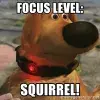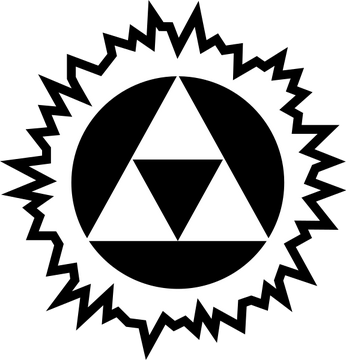Our solar system mostly revolves around the sun on the same axis (apart from Pluto). Our galaxy does the same (along with other galaxies). Why? Gravity is linear?
Would it matter if we tried to escape the sun’s gravity by going “up?”
Best video you’ll ever see on the topic imo (and very short)
I asked this question many years ago on a Usenet group, and the answer was along the lines of what we’re seeing is many millions of years after those orbits began, and that they all eventually flatten out due to the gravity of the other objects in orbit.
So you could have 2 objects at roughly the same orbital distance but perpendicular to one another (eg. one orbiting the star’s poles and the other around it’s equator), and over time the small amount of gravitational force they exert on one another will bring them roughly into the same plane.
Hopefully someone better versed in the topic can come along to explain it better than I can.
Keeping in mind the object with the larger mass will (over those millions of years) pull the smaller object closer in all dimensions/planes
It’s still hard for me to get my head around, it would be great to see an animation showing this with perhaps 3 or 4 objects. It’s especially hard for me to visualize the gas cloud around a star coelescing into a plane, even before the more solid objects form.
Is this because of rotational mechanics around the star?
So, the star and planets all started as one big gas nebula, then the nebuka as a whole started spinning due to uneven distribution of matter within the cloud as it condensed. This spin increased over time and as the sun formed in the center, and planets clumped around in its orbit. The spin relative to each other, along with some interesting collisions between massive bodies, is why a few don’t fit the general mold of spinning the same ways on the same plane. We may have even picked up a planet or two over time that was ejected from another solar system!
This video does an ok job of explaining the spinning and planet formation part. I’m sure thete are better ones out there.
It’s like how the earth bulges out at the equator.
The momentum pulls them out, gravity pulls it back. Similar thing at the solar and galactic planes.
They “bulge” relatively to the spin of the material over time and the clumps of material then forms planets along that general plane.
From the aboves video you can see this at 44seconds
https://www.youtube.com/watch?v=sCkhEu3lYNc&t=44s
And a relevant PBS Spacetime video
Why is the Earth Round and the Milky Way Flat? | Space Time | PBS Digital Studios
But the biggest reason is the way gasses form in space. As noted in the above video at the 8:45 mark. Gasses aren’t able to fall back into the center along their axis of spin because of their momentum. But the gassed above and below the plane can move towards the gathering material there by gravity and so it flattens out.
Any two objects will orbit each other in a plane. The interesting things start to happen after a third body is introduced.
I feel that might become a… problem.
It’s a common shape in the universe: large spherical mass in the center, plane of objects rotating around it.
Imagine a new object orbiting Saturn in a random direction. At some point (two, actually), it will cross the plane of the rings. Eventually it will crash into an object. The average of the impact will be closer to the plane. Eventually, it will either align with the plane or its orbit will be unstable.
Doesn’t even have to impact. The gravity of other bodies in orbit will pull out-of-plane objects closer to the plane over time.
The system starts out as a big cloud of debris orbiting a central point. Each particle is orbiting in its own way, there isn’t any organization. Since there is no organization, most of these particles are going to bump into each other. This changes the speed and direction of the particles, some of them will clump together and most of them ending up gathered at the center of gravity of the entire system. This eventually gets large enough to become your star.
As the remaining particles become clumped together into larger items they will begin exerting gravitational pull on other objects. One plane of orbit will become dominant, and the remaining clumps will gradually settle down into their orbits, in the same general plane, in the same direction. Those that don’t will have their orbital speed reduced enough that the object ends up gathered into the center.
Space itself is 3-dimensional (or 4-d if you include time…and even higher dimensional orders if you want to get into deeper theories).
The reason almost all solar systems (including our own) are relatively flat, or disk-shaped, is because of the way solar systems are formed. Solar systems start as large clouds of gas and dust which coalesce into orbiting objects. The gas, dust, and objects “flatten out” as they spin around the central star because of the physics (conservation of angular momentum).
So even though the planets, asteroids, etc, in our solar system are all mostly moving along a relatively flat plane, the surrounding space is not 2-dimensional. Our planets also vary in how flat their orbits are. For example, Mercury’s orbit has a tilt of about 7 degrees from flat.
Good to finally see the important words, “conservation of angular momentum”.
So, gravity isn’t linear, but rotation is.
For reference, I’m a regular guy who looked up the answer, so maybe someone else can get more in depth, but I’ll offer my basic understanding.
The planets weren’t just plopped down in a straight line, they are all chunks of space debris that flew off of bigger chunks of space debris.
If you covered a ball in paint and spun it REALLY fast in a box slightly bigger than the ball, you’d end up with a line of paint on the walls that lines up with the center of the ball.
The planets are like that paint, but gravity essentially “reaches out and ties a tether” to them that keeps them from going further away. And the whole time, EVERYTHING is spinning and floating further away from the point of the Big Bang.
The last bit about the big bang isn’t really how it works to my understanding. The big bang is compared to an explosion, but its actually more like a balloon inflating, if you imagine the surface of the balloon as analogous to space. The galaxies don’t all move away from some original center to the universe, new bits of space get “added” in between every bit of space, so that every object gets farther away from every other object. If you go backwards in time far enough, every point sees itself as being the center. At least, that’s how I’ve seen it explained.
This answer makes sense to me because of how a gyroscope acts. Thanks.
When things collide, they transfer their movement energy. If things collide like this >- They will continue in roughly the same direction. If they collide like this -> <- their movement will cancel out and they will fall into the sun.
Satistically, at the “beginning of time”, in a random sphere around the sun, things will not be completely the same. So everything will either collide and fall. Or it will collide and continue in roughly the same direction. What we have now are the leftovers that were moving in roughly the same direction and colliding so little that they didn’t fall into the sun because of that.
The same is true for the “disk”: If you start with a roughly evenly distributed sphere of gases or something, there is a middle somewhere where there is a little bit more mass than anywhere else. That’s where things will go.
Gravity comes off the sun in 3 dimensions. The sun is a ball and gravity radiates from it in all directions. if we went up we would still be in the suns gravitational field.








